Sony Wireless Stereo Headphone System MDR-RF985RK | Specs & Features
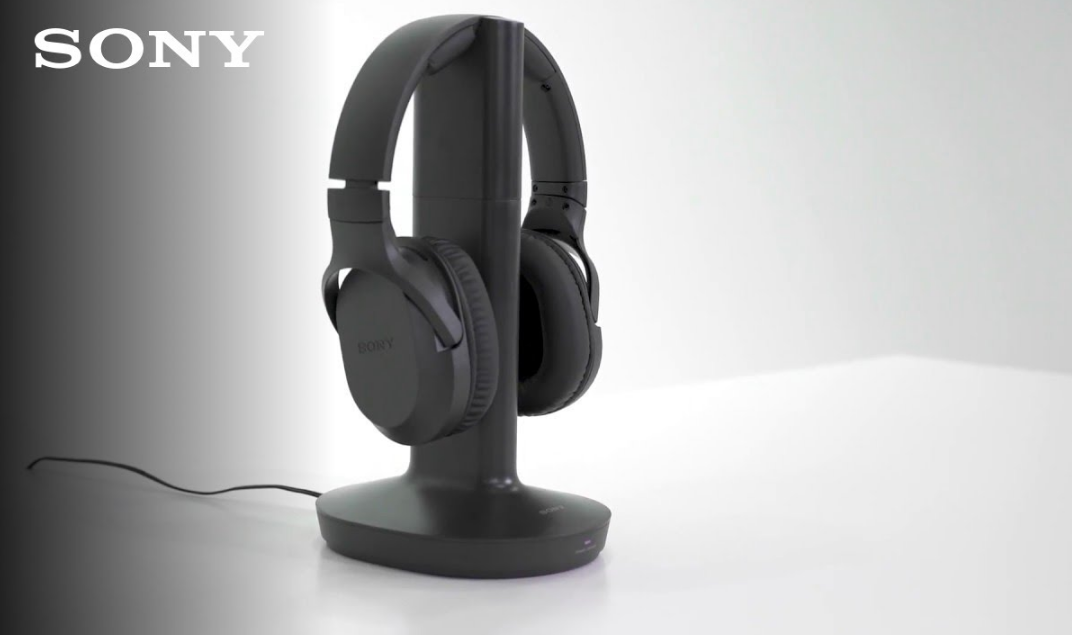
Content
Sony Wireless Stereo Headphone System MDR-RF985RK
Experience high-quality wireless audio with the Sony Wireless Stereo Headphone System . These headphones are designed for those who want to enjoy their music without the hassle of wires, with a comfortable and secure fit for all-day listening. The estimated price of the MDR-RF985RK is around $200, making it a mid-range option in the wireless headphone market. The exact launch date has not been announced, but it is expected to be available in the coming months.
Detailed Specifications
The Sony Wireless Stereo Headphone System MDR-RF985RK features 40mm driver units for powerful and balanced sound, and a frequency response of 10-22,000 Hz. The headphones have a wireless range of up to 150 feet and a battery life of up to 20 hours. They also come with built-in volume control and a convenient auto tune feature. The headphones weigh approximately 9.4 ounces and have a sleek, modern design that will look great with any outfit.
RF stereo transmitter (TMR-RF985R)
- Modulation FM stereo
- Carrier frequency 915.5 MHz, 916.0 MHz, 916.5 MHz
- Channel Ch1, Ch2, Ch3
- Transmission distance
- Approx. 45 m (150 ft) of longest
- Audio inputs Pin jacks (left/right)
- Stereo mini jack
- Power requirements
- DC 12 V (from the supplied AC adaptor)
- Dimensions Approx. 120 mm × 264 mm × 120 mm (4 3/4 × 10 1/2 × 4 3/4 in) (w/h/d)
- Mass Approx. 470 g (1 lb 0.58 oz)
- Rated power consumption 3.0 W
- Operating temperature 5°C to 35°C (41°F to 95°F)
RF stereo transmitter (TMR-RF985R)
- Frequency response 10 Hz – 22,000 Hz
- Power source Built-in lithium-ion rechargeable battery Mass Approx. 320 g (11.29 oz)
- Operating temperature 5°C to 35°C (41°F to 95°F)
Package content

Included items
- RF stereo transmitter TMR-RF985R
- Wireless stereo headphones MDR-RF985R
- AC adaptor (12 V) (1)
- Connecting cable (stereo mini plug pin plug × 2), 1 m (39 3/8 in) (1)
- Card warranty (1)
- Operating Instructions (this manual) (1)
- Design and specifications are subject to change without notice.
Features
Thank you for purchasing the Sony MDR-RF985RK Wireless Stereo Headphone System. Before operating the unit, please read this manual thoroughly and retain it for future reference. Some features are:
- Wireless system that allows you to listen to a program free from the restriction of a cord
- Easy connection to TV and Hi-Fi Audio system component
- Fast recharging function with secure charging mechanism
- Noise reduction system to reproduce a clear sound with minimum transmission noise
- Automatic tuning on headphones for optimum signal reception 3 transmission channels available
- Up to 45 meters (150 feet) reception range
- Long playback time (approx. 25 hours)
- High fidelity sound reproduction
- Volume control function on the headphones
- Transmission distance varies depending on conditions of use.
Setup of Sony MDR-RF985RK
Setting up the MDR-RF985RK is easy and straightforward. Simply plug the transmitter into a power source and connect it to your audio device. Then, turn on the headphones and they will automatically connect to the transmitter. The headphones also have an auto tune feature that will ensure a clear and stable connection at all times. Once connected, you can adjust the volume and control your music using the buttons on the headphones.
Connect the AC adaptor.
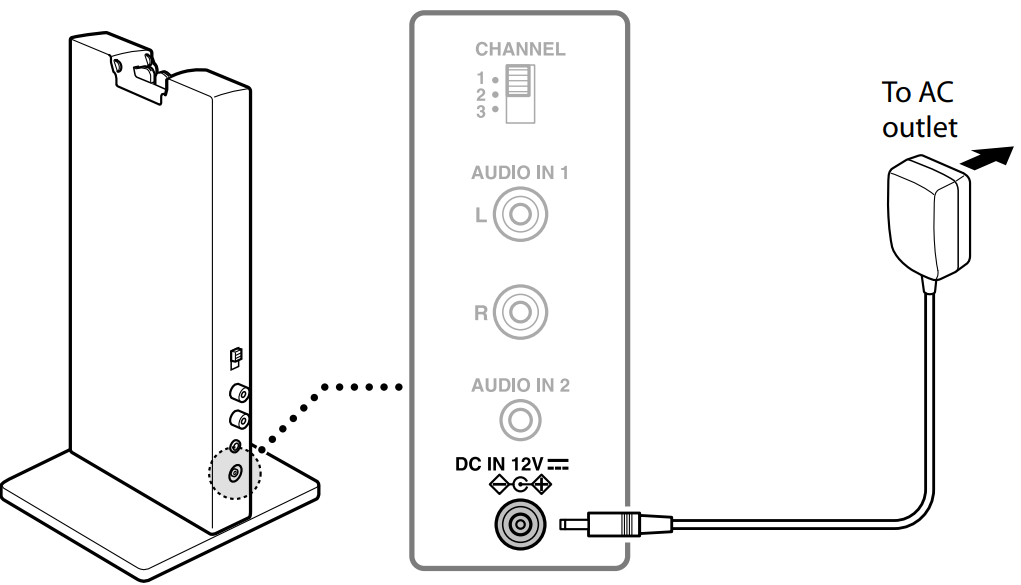
Charge the headphones
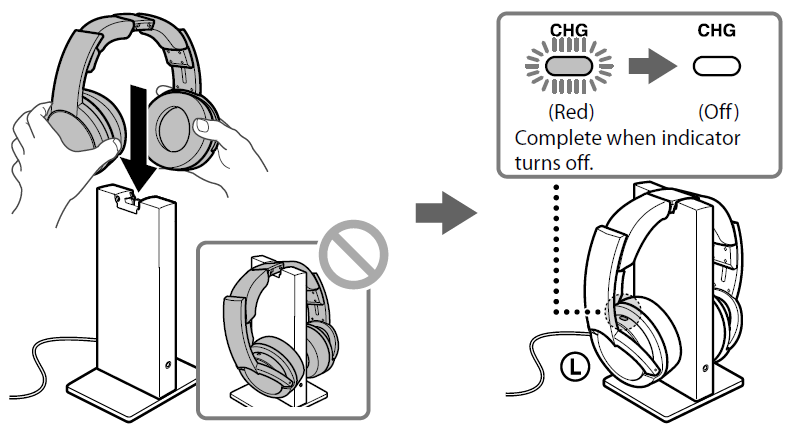
- Connect the A/V component, following hookup A or B below.
Using the headphone jack of the A/V component

- Using the audio out (L/R) jacks of the A/V component
If you want to receive audio on the headphones while at the same time hearing audio from the television speakers: connect the transmitter to your Cable Box/Satellite Box rather than your television.
Wear the headphones.
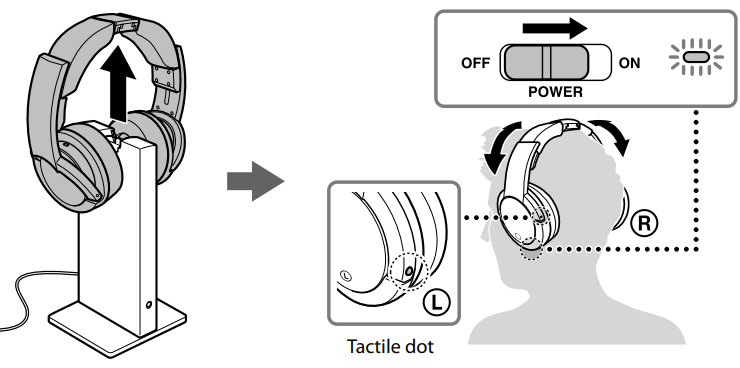
Before listening
To reduce the risk of hearing damage, first lower the volume.Start playback of the A/V component.
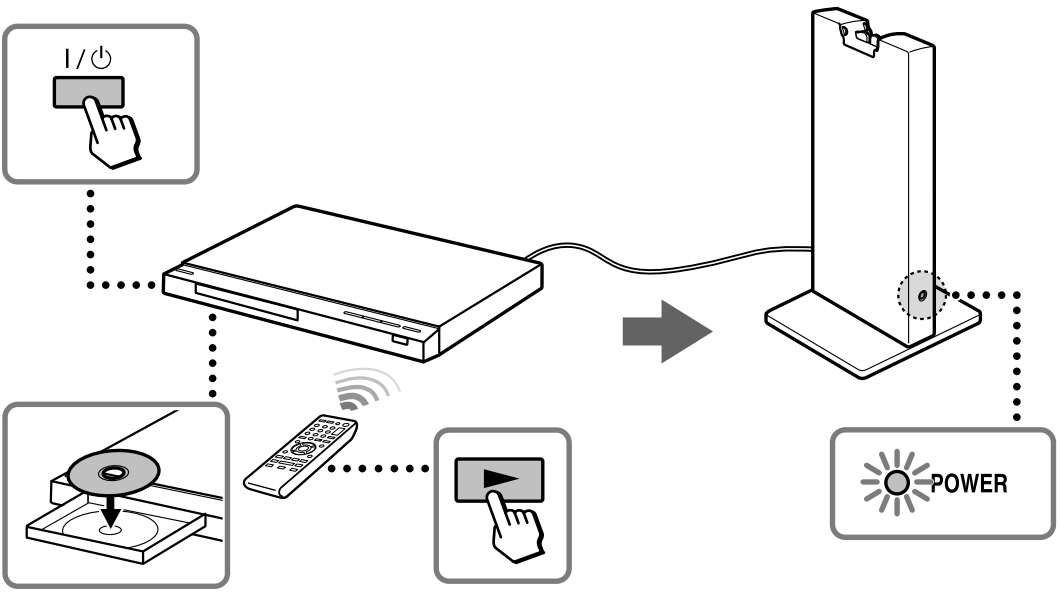
- Adjust the volume.
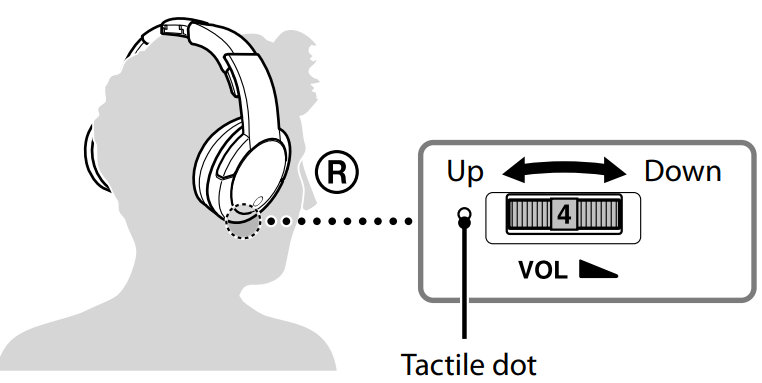
If you cannot receive a clear audio signal
First change the radio frequency with the CHANNEL selector switch on the transmitter, then briefly press the AUTO TUNING button on the headphones.

Noise Reduction process
The transmitter compresses the audio signal and converts it to RF signal. The headphones convert the received RF signal to an audio signal and decompress it. This process reduces noise picked up during transmission.

- The transmitter compresses the audio signals dynamic range, then converts it to RF signal.
- Noise may occur due to long-distance transmission, etc.
- The headphones convert the RF signal to an audio signal.
- Noise may occur during conversion.
- Decompression of the audio signals dynamic range reduces the noise level and improves the S/N (signal-to-noise) ratio.
After use
Turn off the power of the headphones.
About sending RF signals
- The transmitter starts sending RF signals automatically when it detects an audio signal from the connected component. Note that;
- Noise may occur depending on the transmitter position and room conditions. It is recommended to place the transmitter in a location that produces the clearest sound.
- If the transmitter is placed on a metallic table, you may hear noise, or the reception range may decrease. Do not place on a metallic table.
If no signal or low signal is input for about 4 minutes
- When no signal is input for about 4 minutes, the transmitter turns off automatically. The POWER indicator of the transmitter blinks for 60 seconds, then turns off. The transmitter restarts after receiving an audio signal again.
- The transmitter may also turn off if low signal is input for about 4 minutes. In this case, raise the volume of the connected A/V component within the range where the sound is not distorted, then lower the volume of the headphones.
- If signal noise is output from the connected A/V component, the transmitter may not turn off, even when no audio signal is input.
Charging
When the transmitter’s contact pins meet the headphones’ contact points, the CHG indicator lights up red. If they do not meet, the indicator will not light up. Confirm that the headphones make a “click” sound when you put them on the transmitter. When the headphones are correctly placed on the transmitter, the upper surface of the headphones becomes level with the transmitter. The CHG indicator turns off when charging is complete.
Charging and usage time
- Approx. charging time : 3.5 hours2)
- Approx. usage time1) : 25 hours3)
- at 1 kHz, 0.1 mW + 0.1 mW output
- hours required to fully charge an empty battery
- Time may vary, depending on the temperature or conditions of use.
To recharge the headphone battery after use
Place the headphones on the transmitter after use. The CHG indicator lights up, then charging starts. When charging is complete, there is no need to remove the headphones from the transmitter.
Remaining battery
To check the remaining battery charge of the headphones, turn on the headphones, and check the power indicator near the POWER switch. The battery is still serviceable when the indicator lights up green. Charge the headphones if the power indicator turns off, dims, flashes, or the sound becomes distorted or noisy.
Notes
- Insert the AC adaptor plug firmly.
- Be sure to use the supplied AC adaptor.
Using AC adaptors with different plug polarity or other characteristics can cause product failure.

- The battery capacity may decrease if the headphones are turned on and placed on the transmitter with the AC adaptor connected.
- The transmitter automatically turns off while charging the headphones.
- If the headphones are used outside the recommended temperature range, the CHG indicator flashes and charging stops. Charge in an environmental temperature of between 5°C and 35°C (between 41 °F and 95 °F).
- If you haven’t used the headphones for a long period of time, the life of the rechargeable battery may become short. This will improve when you repeat the charging and discharging process several times.
- When the battery life reduces to half, this may be the end of battery lifetime. For how to change batteries, consult your place of purchase or a Sony dealer.
- Do not store the headphones in hot places for a long period of time. When storing them for more than a year, charge the battery once a year to prevent over discharge.
- Do not touch the contact pins of the transmitter. If the contact pins become dirty, charging may not be possible.
- Charging may not be completed if the transmitter’s contact pins and headphones’ contact points are dusty. Wipe them with a cotton bud, etc.
Volume setting
- If you connect the transmitter to the headphone jack of the A/V component, set the volume of the A/V component as high as possible but not so high that the audio signal becomes distorted.
- When watching videos, be careful not to raise the volume too high in quiet scenes. You may hurt your ears when a loud scene is played.
Better reception
Receiving performance
- This system utilizes very high frequency signals in the 900 MHz band so the receiving performance may deteriorate due to the surroundings. The following examples illustrate conditions that may reduce the reception range or cause interference.
- Inside a building with walls containing steel beams
- An area with many steel file cabinets, etc.
- An area with many electrical appliances capable of generating electromagnetic fields
- The transmitter is placed on a metal instrument. An area facing a roadway
- Noise or interfering signals exist in the surroundings due to radio transceivers in trucks, etc.
- Noise or interfering signals exist in the surroundings owing to wireless communication systems installed along roadways.
The effective area of the transmitter
- The optimum distance is up to approximately 45 m (150 ft) without the system picking up some interference. However, the distance may vary depending on the surroundings and environment.
- If the system picks up some noise within the above mentioned distance, reduce the distance between the transmitter and the headphones, or select another channel.
- When you use the headphones inside the effective area of the transmitter, the transmitter can be placed in any direction from the listener.
- Even within the signal reception area, there are some spots (dead spots) where the RF signal cannot be received. This characteristic is inherent to RF signals, and does not indicate malfunction. By slightly moving the transmitter, location of the dead spot can be changed.
Replacing the earpads
The earpads are replaceable. If the earpads become dirty or worn out, replace them as illustrated below. The earpads are not commercially available. You can order replacements from the store where you purchased this system, or at your nearest Sony dealer.
Remove the old earpad by pulling it out of the groove on the housing.
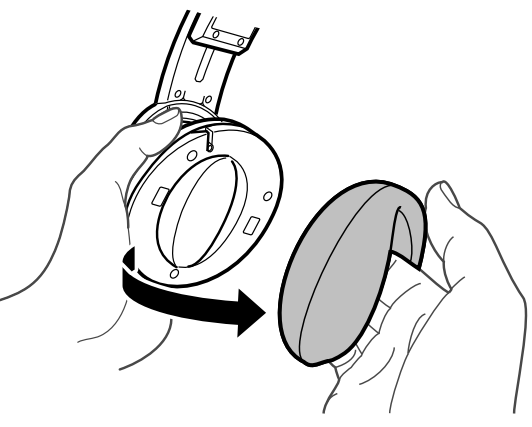
- Place the new earpad on the driver unit. Hang the edge of the earpad on one side of the driver unit’s groove edge, then turn the edge of the earpad around the driver unit as illustrated below. When the earpad is securely inserted into the groove, adjust the earpad to the vertical position.
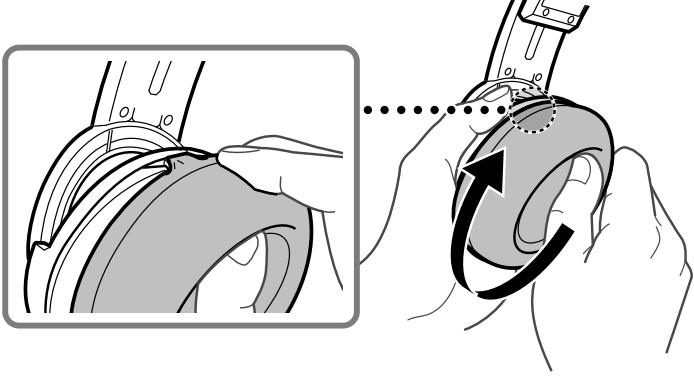
Precautions
- If the transmitter is not to be used for a long period of time, disconnect the AC adaptor from the AC outlet by holding the plug. Do not pull on the cord.
- Do not leave this system in a location subject to direct sunlight, heat or moisture.
- This system is guaranteed for use in the temperature range of 5 °C to 35 °C (41 °F to 95 °F).
- You may hear some noise when you disconnect the AC adaptor from the transmitter before taking off the headphones.
- Avoid exposure to temperature extremes, direct sunlight, moisture, sand, dust or mechanical shock.
Notes on headphones
To reduce the risk of hearing damage Avoid using headphones at high volume. Hearing experts advise against continuous, loud and extended play. If you experience a ringing in your ears, lower the volume or discontinue use.
Caring for others
Keep the volume at a moderate level. This will allow you to hear outside sounds and to be considerate to the people around you. If you have any questions or problems concerning the system that are not covered in this manual, please consult your nearest Sony dealer. Be sure to bring the headphones and the transmitter to the Sony dealer when requiring repair work.
Description of Sony Wireless Stereo Headphone System
The Sony Wireless Stereo Headphone System wireless headphones are designed for comfort and convenience. The headphones have a cushioned headband and soft ear pads for long-lasting comfort. They are also equipped with swiveling ear cups that allow for easy storage and transportation. The headphones have a simple and intuitive control system that allows you to easily adjust the volume, skip tracks, and answer calls. The built-in microphone also allows for hands-free calling, making it easy to take calls while on-the-go.
WARNING
- To reduce the risk of fire or electric shock, do not expose this apparatus to rain or moisture.
- To reduce the risk of fire or electric shock, do not expose this apparatus to dripping or splashing, and do not place objects filled with liquids, such as vases, on the apparatus.
- Do not expose the batteries (battery pack or batteries installed) to excessive heat such as sunshine, fire or the like for a long time.
- To avoid electrical shock, do not open the cabinet. Refer servicing to qualified personnel only.
- Do not install the appliance in a confined space, such as a bookcase or built-in cabinet.
- As the main plug of AC power adaptor is used to disconnect the
- AC power adaptor from the mains, connect it to an easily accessible AC outlet. Should you notice an abnormality in it, disconnect it from the AC outlet immediately.
- Excessive sound pressure from earphones and headphones can cause hearing loss.
Troubleshooting
If you run into any problems using this system, use the following checklist. Should any problem persist, consult your nearest Sony dealer.
No sound/Low sound
- Turn on the headphones. Check the connection of the A/V component or the AC adaptor.
- Check that the A/V component is turned on.
- If you connect the transmitter to an A/V component using the headphone jack, raise the volume level on the connected A/V component within the range where the sound is not distorted.
- Change the radio frequency with the CHANNEL selector on the transmitter, then press the AUTO TUNING button on the right housing of the headphones.
- Use the headphones near the transmitter, or change the position of the transmitter.
- Charge the headphones. If the power indicator is still off after charging, take the headphones to a Sony dealer. Raise the headphone volume.
Distorted or intermittent sound (sometimes with noise)
- Charge the headphones. If the power indicator is still off after charging, take the headphones to a Sony dealer.
- Use the headphones near the transmitter, or change the position of the transmitter
- Do not place the transmitter on a metallic table.
- If you connect the transmitter to an A/V component using the headphone jack, lower the volume level on the connected A/V component within the range where the sound is not distorted.
- Change the radio frequency with the CHANNEL selector switch on the transmitter, then set to the same radio frequency with the AUTO TUNING button on the right housing of the headphones
Loud background noise
- If you connect the transmitter to an A/V component using the headphone jack, raise the volume level on the connected A/V component within the range where the sound is not distorted.
- Charge the headphones. If the power indicator is still off after charging, take the headphones to a Sony dealer.
- Do not place the transmitter on a metallic table. Use the headphones near the transmitter.
The sound cuts off
The transmitter turns off if no signal or low signal is input for 4 minutes. If you connect the transmitter to an A/V component using the headphone jack, raise the volume level on the connected A/V component within the range where the sound is not distorted.
Battery cannot be charged/CHG indicator flashes, or does not light up
- Put the headphones on the transmitter correctly so that the CHG indicator lights up.
- The transmitter’s contact pins and headphones’ contact points are dusty. Wipe them with a cotton bud, etc.
- You cannot charge while the CHG indicator flashes. Charge in an environmental temperature of between 5°C and 35°C (between 41 °F and 95 °F).
- Check that the AC adaptor is connected to the transmitter.
Pros & Cons
Pros
- Wireless freedom for up to 150 feet
- Comfortable and secure fit
- Powerful and balanced sound
- Long battery life of up to 20 hours
- Built-in microphone for hands-free calling
Cons
- Mid-range price point
- May not fit all head sizes comfortably
- No active noise cancellation
Customer Reviews of Wireless Stereo Headphone Systems
Customers love the wireless freedom and high-quality sound of the Sony Wireless Stereo Headphone System . They also appreciate the long battery life and comfortable fit. However, some customers have noted that the headphones may not fit all head sizes comfortably, and that there is no active noise cancellation. Overall, the Sony Wireless Stereo Headphone System MDR-RF985RK is a great option for those looking for a high-quality wireless headphone solution.
Faqs
What Makes the Sony MDR-RF985RK Wireless Headphones Unique?
How long does the Sony MDR-RF985RK's battery last, and how do I charge it?
How Can I Fix My Sony MDR-RF985RK Headphones Not Charging?
Is it possible to connect my TV or other devices to the Sony MDR-RF985RK?
How Do I Connect the Transmitter to My Sony MDR-RF985RK Headphones?
How Far Are the Sony MDR-RF985RK Wireless Headphones Compatible?
What Should I Do If I Have Problems with the Sound Quality of My Sony MDR-RF985RK Headphones?
What are the compatibility requirements for the Sony MDR-RF985RK Headphones with Gaming Consoles?
Is it possible to use the Sony MDR-RF985RK headphones with as many transmitters as available?
How long is the Sony MDR-RF985RK Headphone Warranty valid?
Leave a Comment
